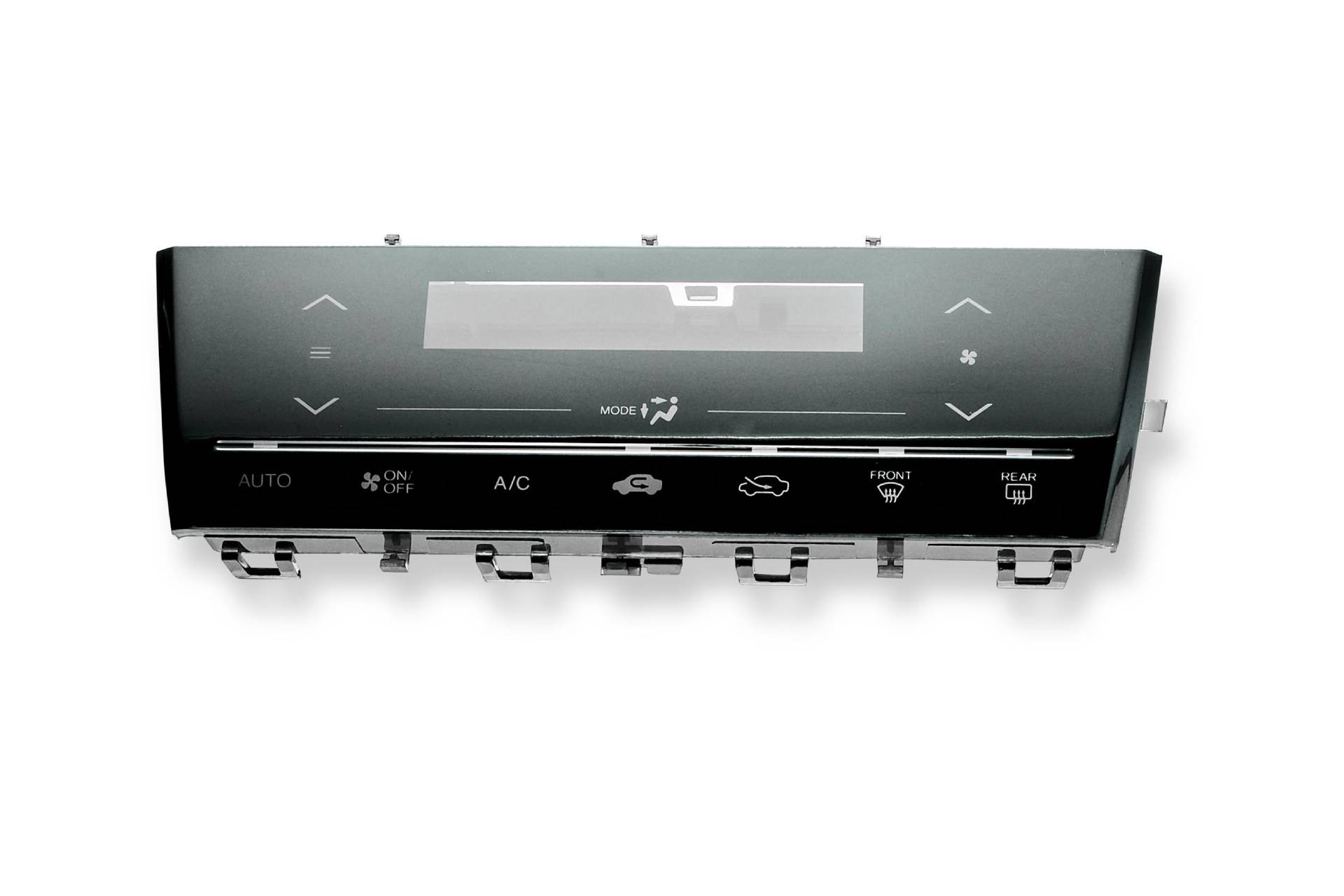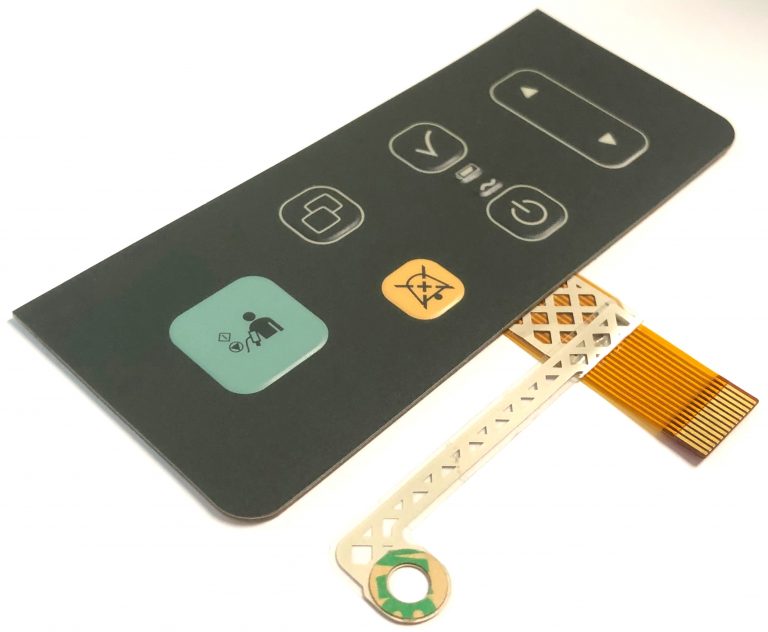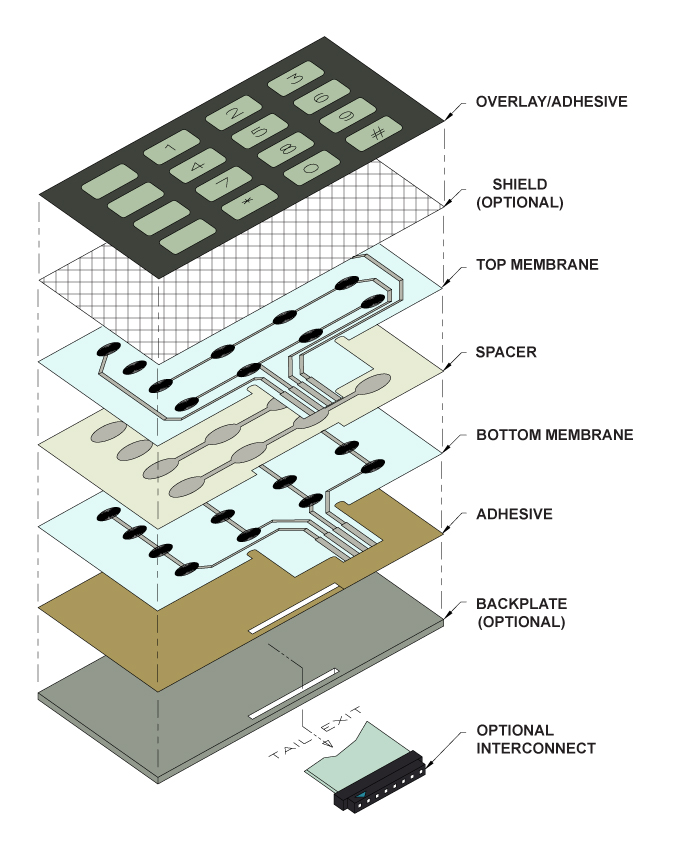All Concerning Membrane Change: Comprehending Its Layout and Functionality
When you think about the control user interfaces in modern tools, membrane switches commonly come to mind. These elements are extra than simply buttons; they mix design and capability flawlessly. Recognizing how they function and what makes them reliable can alter your point of view on daily electronics. There are nuances to their layout and efficiency that you might not be conscious of. Let's explore what sets membrane switches over apart from other control systems.
What Are Membrane Switches?

Their smooth nature makes them very easy to clean and immune to dirt and moisture, an important function in lots of settings. Membrane layer switches can additionally be tailored concerning form, size, and graphics, allowing suppliers to develop one-of-a-kind user interfaces tailored to certain items. Plus, they're lightweight and thin, which aids in reducing the general mass of tools. In general, membrane switches play a considerable role in boosting user experience throughout a vast selection of applications.
How Membrane Layer Switches Job
When you push a trick on a membrane layer switch, it triggers an uncomplicated yet efficient mechanism. The leading layer, typically made of versatile product, lowers onto a conductive layer underneath it. This action bridges the void between conductive traces, completing an electric circuit. As quickly as the circuit shuts, it sends out a signal to the device's controller, which translates your input.
You'll discover that the tactile comments differs based upon the switch style, providing either a soft click or an extra obvious feedback. As soon as you release the trick, the membrane returns to its initial position, reopening the circuit and stopping the signal. This process occurs almost instantaneously, guaranteeing a receptive customer experience.
Membrane layer buttons are prominent due to their resilience and resistance to dust and wetness, making them optimal for different applications, from family devices to clinical gadgets. Comprehending this procedure helps you value their widespread usage.
Key Parts of Membrane Buttons
Recognizing the key parts of membrane layer switches is basic for grasping their performance and design. At the core, you'll find the visuals overlay, which gives the aesthetic interface for customers. Under that, there's a spacer layer that divides the circuit layers, making sure that they don't make call till pushed. The circuit layer is where the magic takes place; it includes conductive traces that finish the circuit when you press the switch. An additional crucial aspect is the glue backing, allowing the button to follow surface areas securely. Lastly, the safety layer guards versus environmental elements and put on, prolonging the switch's lifespan. Each part plays a considerable duty in making certain dependable efficiency and user interaction. By recognizing these elements, you'll acquire insight right into just how membrane switches over operate and their value in numerous applications.
Materials Used in Membrane Layer Switch Style
The efficiency and sturdiness of membrane layer changes greatly depend upon the products used in their layout. You usually run into polyester and polycarbonate as primary substrates because of their outstanding stamina and adaptability. These products resist look at this site scrapes and chemicals, making them suitable for requiring environments.
The conductive layers usually utilize silver or carbon, chosen for their reliability and conductivity. membrane switch manufacturer. Silver offers superior performance, while carbon is an economical alternative. For the overlay, you might consider a matte or shiny finish, relying on your visual needs and user experience
Make certain to pick adhesives that withstand environmental aspects like temperature level and moisture. Choosing the appropriate materials will ensure your membrane switch stands the examination of time.
Design Factors To Consider for Membrane Layer Buttons
While creating membrane buttons, it's crucial to take right into account various factors that affect their capability and customer experience. Beginning by concentrating on the design and linked here switch dimension; make particular they're user-friendly and easy to browse.
Do not overlook the visuals design; clear labeling and shade contrast are considerable for visibility. Verify your design suits environmental aspects, like dampness or temperature level variations, which could impact efficiency. Keep in mind the relevance of testing prototypes with real users to gather feedback and make necessary modifications. This repetitive procedure assists you refine the style, validating it fulfills both useful and aesthetic requirements successfully. By carefully thinking about these components, you'll create a membrane layer switch that enhances functionality and contentment.
Applications of Membrane Buttons
Membrane layer switches are functional elements located in numerous applications, from industrial tools to consumer electronics. You'll see their effect in makers that need long lasting interfaces and in devices that gain from sleek layouts. Recognizing these applications assists you value the capability and practicality of membrane layer switches in everyday modern technology.
Industrial Equipment Usage
When you're looking to enhance the capability of industrial tools, membrane layer buttons use a reliable remedy that incorporates durability with user-friendly design. These buttons are excellent for extreme settings, offering resistance to dirt, dampness, and chemicals. Welcome membrane layer buttons to streamline your procedures and enhance general efficiency.
Consumer Electronic Devices Combination
In the domain of customer electronic devices, membrane layer switches play a vital duty in boosting customer interaction and device functionality. Membrane switches likewise guarantee toughness and resistance to dirt and moisture, prolonging the life-span of you could look here your electronic devices. By picking membrane layer switches, you boost not just the capability however additionally the design of your gadgets, making daily interactions smooth and satisfying.
Advantages and Downsides of Membrane Layer Switches
While membrane layer buttons provide a range of benefits, they likewise come with some drawbacks that you ought to consider. One substantial advantage is their compact style, making them suitable for space-constrained applications.

Membrane buttons can have a much shorter life expectancy compared to mechanical switches, particularly under heavy use. They can likewise be much less responsive, which could influence user comments during procedure. Balancing these pros and disadvantages will aid you determine if membrane layer buttons are the right fit for your task.
Regularly Asked Concerns
The Length Of Time Do Membrane Layer Switches Over Normally Last?
Membrane switches over usually last between 5 to 10 years, depending on use and environmental problems. You'll intend to review aspects like wear, direct exposure to wetness, and temperature fluctuations to assess their longevity properly.
Can Membrane Layer Changes Be Personalized for Specific Styles?
Yes, you can tailor membrane buttons to fit details layouts (membrane switch manufacturer). You'll have the flexibility to choose shades, shapes, and layouts that match your task's requirements, ensuring they blend effortlessly with your overall aesthetic
What Is the Price Variety for Membrane Switch Over Manufacturing?
The expense variety for membrane layer button production usually drops between $1 and $10 each, depending upon factors like style intricacy, amount, and materials. You can get quotes from producers to locate the best choice.

Are Membrane Layer Switches Over Water-proof or Resistant?
Membrane layer buttons can be designed to be water-proof or resistant, relying on materials used and construction methods. If you need them for wet environments, guarantee you specify those requirements throughout the design process.
How Do Membrane Switches Over Contrast to Typical Buttons?
Membrane buttons are typically thinner and more versatile than standard switches, providing a smooth design. They're frequently simpler to clean and integrate, yet could not supply the tactile responses you're utilized to with mechanical choices.
Verdict
